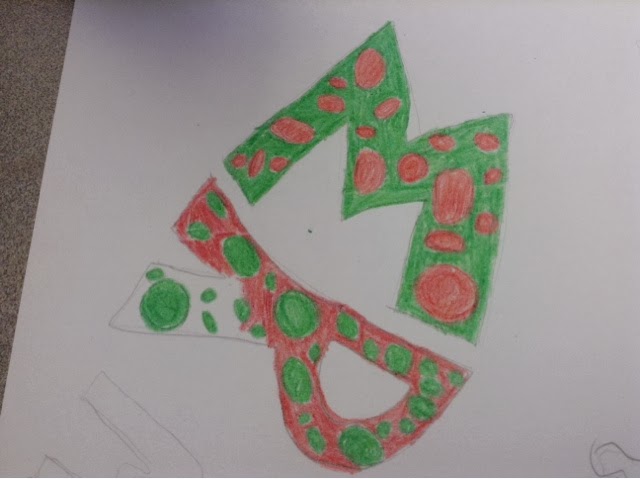Fourth grade is working with complementary, and neutral colors. Complementary colors are directly across from each other on the color wheel.
Students drew their initials in bubble or block lettering and colored the inside with both an irregular pattern and using complementary colors. An irregular pattern is like camouflage. Students used crayons to color in their initials.
Students cut an irregular pattern around their paper,









































